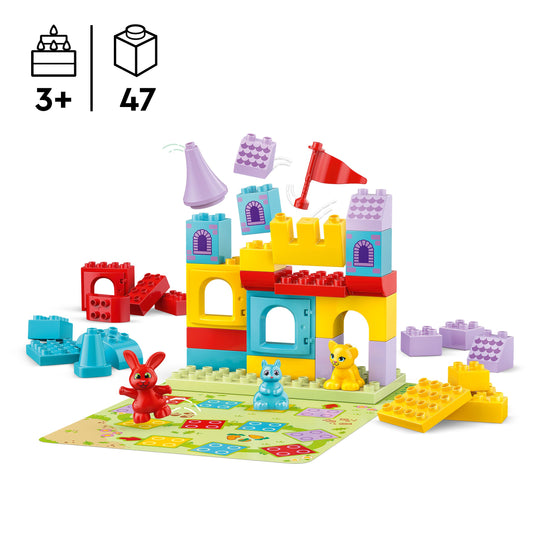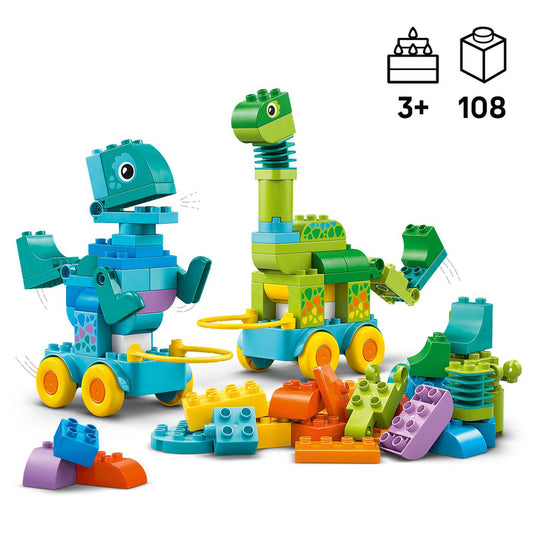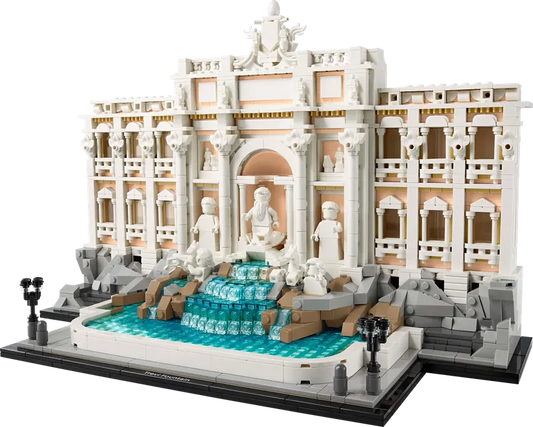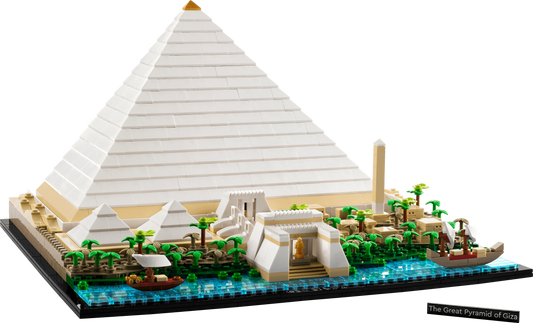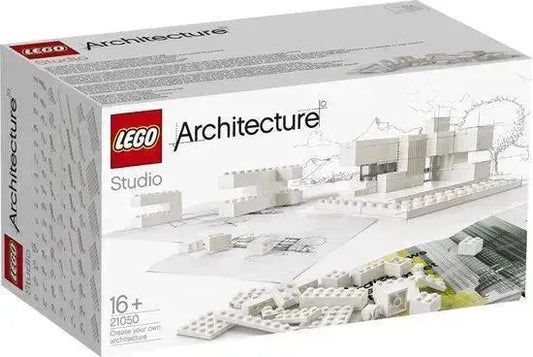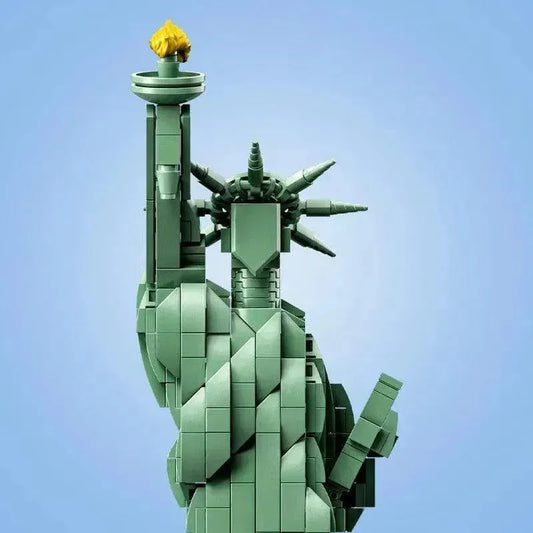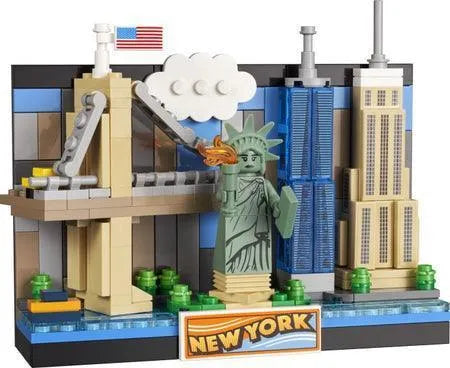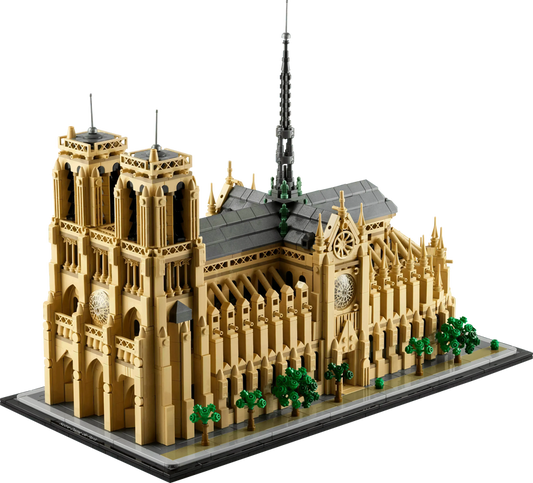The history of LEGO

How did LEGO come about?
The story of LEGO begins in 1932 in Billund, Denmark, with Ole Kirk Christiansen, a carpenter who decided to change his business from woodworking to toy production. He started making wooden toys, such as marbles and yoyos, under the name "LEGO", derived from the Danish words "leg godt" which means "play well".
In 1934, Christiansen introduced the first LEGO bricks, made from cellulose acetate, a type of plastic. These stones were not compatible with each other and were mainly used as toys for girls. But in 1949, LEGO developed a new brick that was compatible with other manufacturers' bricks, and they began producing building sets for children. These building sets became a great success and LEGO quickly grew into one of the largest toy manufacturers in the world.
In 1955, LEGO introduced their famous "System of Play" in which the bricks fit together exactly, so that children could really build something. In the years that followed, LEGO expanded their product line to include different themes such as space, trains, and military, and in 1978 they introduced LEGO minifigures, small figures that children could use to populate their builds.
In the 1980s and 1990s, LEGO continued to grow, introducing computer-controlled building sets and licensing deals with popular franchises such as Star Wars and Harry Potter. In 1998, LEGO released the first LEGO video game, LEGO Island, and since then many LEGO-related video games and films have been released.
To this day, LEGO remains one of the most popular toy brands in the world, with a growing fan base of both children and adults. The LEGO bricks are still made of plastic, but the company has announced that it is aiming for more sustainable production in the future. Regardless of the changes, the fact remains that LEGO has become an icon in the toy world and continues to inspire the creativity of children and adults around the world.
-
LEGO sets with all-terrain vehicle
READ MORE -

LEGO Building Plates
READ MORE -
LEGO Porsche
READ MORE -

The nicest Police sets from LEGO
READ MORE -

LEGO Airplanes
READ MORE -
LEGO Tractors
READ MORE -
LEGO Lamborghini
READ MORE -
Gaming, computer games from LEGO
READ MORE -

Why the Concorde is an engineering marvel
READ MORE
LATEST LEGO SETS
-
LEGO 3-in-1 dieren op wielen 10448 DUPLO
Regular price €29,99 EURRegular price€34,99 EURSale price €29,99 EURSale -
LEGO Hopsy's kasteelspel 10450 DUPLO
Regular price €33,99 EURRegular price€39,99 EURSale price €33,99 EURSale -
LEGO 3-in-1 dinosaurussen op wielen 10451 DUPLO
Regular price €59,99 EURRegular price€69,99 EURSale price €59,99 EURSale -
LEGO McQueens bezoek aan Docs garage 10456 DUPLO
Regular price €25,99 EURRegular price€29,99 EURSale price €25,99 EURSale -
LEGO De tuin en kas van Opa Big 10461 Peppa Pig
Regular price €67,99 EURRegular price€79,99 EURSale price €67,99 EURSale -
LEGO De pikhouweelmijn 21277 Minecraft
Regular price €46,99 EURRegular price -
LEGO De Enderman toren 21279 Minecraft
Regular price €84,99 EURRegular price€99,99 EURSale price €84,99 EURSale -
LEGO Aston Martin Valkyrie 42208 Technic
Regular price €53,99 EURRegular price -
LEGO Minnie's huisdierenhotel 43274 Disney
Regular price €33,99 EURRegular price€39,99 EURSale price €33,99 EURSale -
LEGO Toy Story feesttrein en RC auto 43264 Disney
Regular price €33,99 EURRegular price
SELECTED FOR YOU
-
LEGO 21062 (Pre-Order: March 2025)
Regular price €135,99 EURRegular price -
LEGO Pyramid of Giza 21058 Architecture
Regular price €118,99 EURRegular price -
LEGO Build your own Architecture buildings with this set Studio 21050 Architecture
Regular price €449,99 EURRegular price -
LEGO The New York Skyline 21028 Architecture
Regular price €42,99 EURRegular price -
LEGO Statue of Liberty 21042 Architecture
Regular price €84,99 EURRegular price -
LEGO Trafalgar Square London 21045 Architecture
Regular price €99,99 EURRegular price -
LEGO New York Postcard 40519 Creator
Regular price €17,99 EURRegular price -
LEGO Himeji Castle 21060 Architecture
Regular price €135,99 EURRegular price€159,99 EURSale price €135,99 EURSale -
LEGO Slot Neuschwanstein 21063 Architecture
Regular price €243,99 EURRegular price -
LEGO Notre-Dame Cathedral 21061 Architecture
Regular price €195,99 EURRegular price
-

LEGO Avatar
LEGO Avatar: Dive into the wonderful world of Pandora! Build with Jake...
-

LEGO STAR WARS
Experience epic space adventures with LEGO Star Wars sets! Build iconic starships,...
-

LEGO Classic
Discover endless building fun with LEGO Classic sets! This collection offers a...






